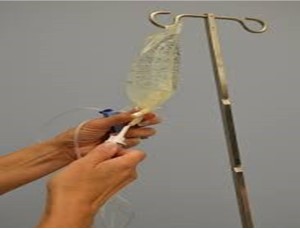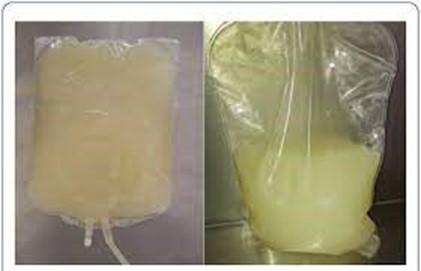A nurse is preparing to administer 2 units of packed RBCs to a client.
Which of the following actions should the nurse take?
Transfuse each unit of blood over 5 hr.
Change the IV tubing after each unit of blood is transfused.
Prime the tubing with 0.9% sodium chloride.
Administer the blood through a 22-gauge intravenous catheter.
The Correct Answer is C

When administering packed RBCs, the tubing should be primed with 0.9% sodium chloride.
Transfusing each unit of blood over 5 hours (choice A) is not recommended as it may increase the risk of bacterial growth.
Packed RBCs should be transfused over 2 to 3 hours.
Changing the IV tubing after each unit of blood is transfused (choice B) is not necessary.
Administering the blood through a 22-gauge intravenous catheter (choice D) may not be appropriate as a larger gauge catheter is typically used for blood transfusions.
Nursing Test Bank
Naxlex Comprehensive Predictor Exams
Related Questions
Correct Answer is A
Explanation

The earliest indication of peritonitis in a patient undergoing peritoneal dialysis is often cloudy dialysis fluid when drained from the body.
Choice B is incorrect because an increased heart rate is not the earliest indication of peritonitis.
Choice C is incorrect because generalized abdominal pain is not the earliest indication of peritonitis.
Choice D is incorrect because fever is not the earliest indication of peritonitis.
Correct Answer is C
Explanation
Platelets 70,000/mm.
The priority finding for a nurse assessing a client who has cirrhosis to report is a platelet count of 70,000/mm.
A low platelet count (thrombocytopenia) can be a complication of cirrhosis and can increase the risk of bleeding.
A platelet count below 150,000/mm3 is considered low and should be reported to the provider.
Choice A is incorrect because while a distended abdomen can be a sign of ascites, a complication of cirrhosis, it is not the priority finding to report.
Choice B is incorrect because while clay-colored stools can be a sign of biliary obstruction, it is not the priority finding to report.
Choice D is incorrect because while an elevated alkaline phosphatase level can be a sign of liver damage, it is not the priority finding to report.
Whether you are a student looking to ace your exams or a practicing nurse seeking to enhance your expertise , our nursing education contents will empower you with the confidence and competence to make a difference in the lives of patients and become a respected leader in the healthcare field.
Visit Naxlex, invest in your future and unlock endless possibilities with our unparalleled nursing education contents today
Report Wrong Answer on the Current Question
Do you disagree with the answer? If yes, what is your expected answer? Explain.
Kindly be descriptive with the issue you are facing.
